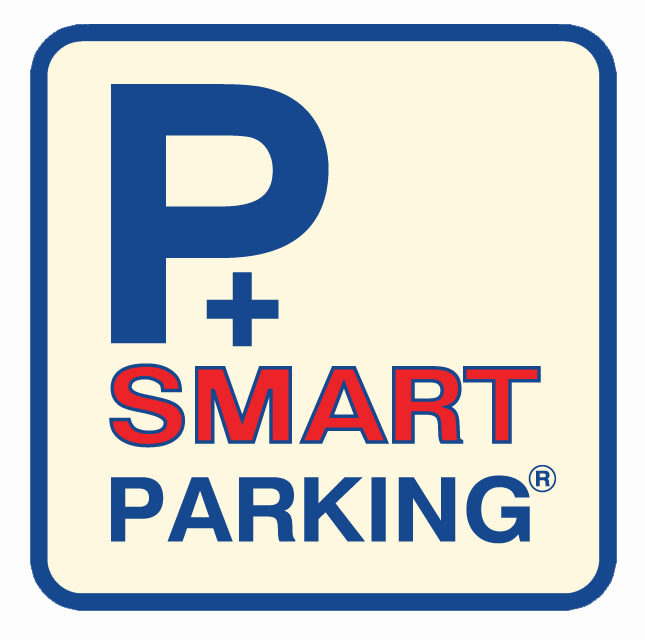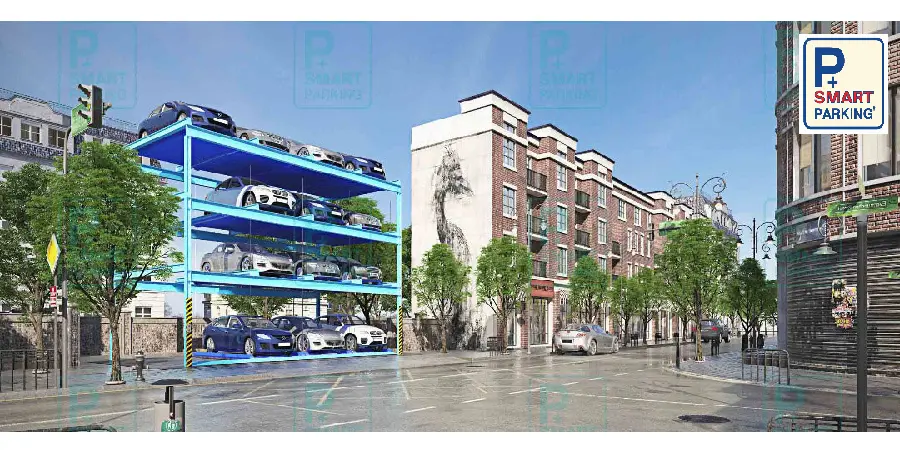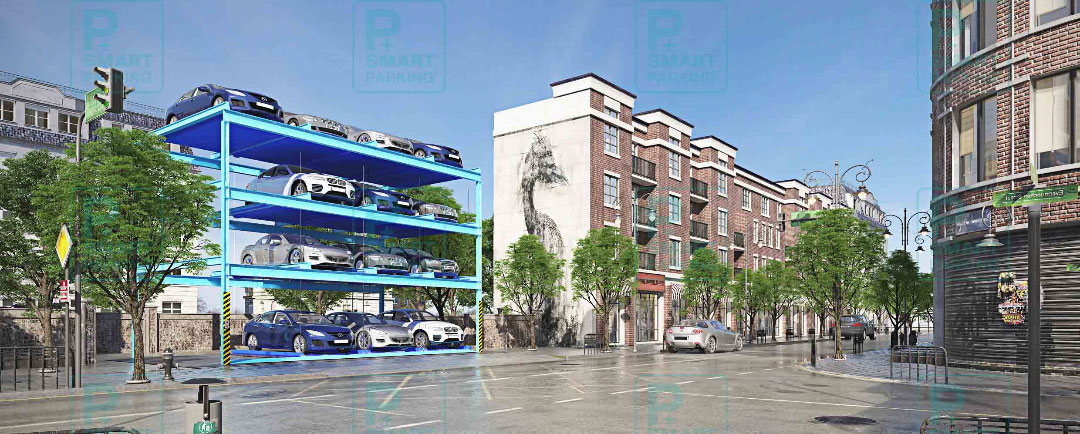
Puzzle system (PSH)
It is very user friendly application for parking requirement in residential as well as commercial buildings. Every operation of elevating the car is totally automated by well-known computerized PLC controllers by the help of ease of operating panels.
In puzzle parking systems, the parking spaces are arranged on two or three levels. The upper and lower level parking spaces move vertically and the middle parking spaces move horizontally (left and right) to allow upper or lower level cars to come up or down to driveway level and be driven off the platforms. The middle level of the machine has one less car than the upper and lower level to enable the lower cars to move left and right to create the vacant space.
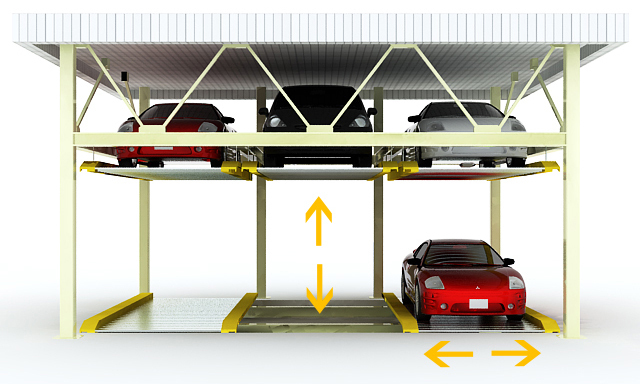
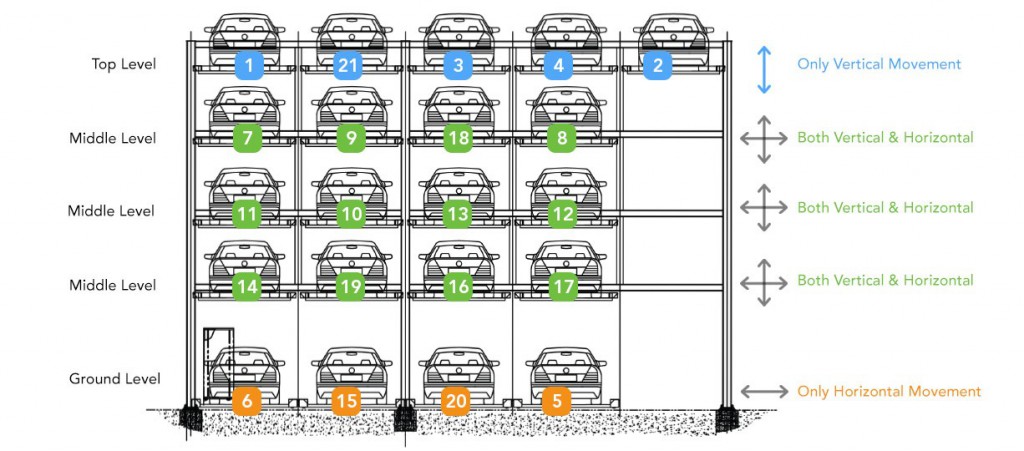
Advantages:
- Independent access
- Can accommodate SUV’s
- No pit required, can be used on upper levels of a garage
- Multiple entry to reduce time
- Low cost installation
- Simple operation and easy maintenance
- Low operating cost
- Variation available from 2 to 7 levels
Safety:
- Emergency stop chassis
- Safety sensors
- Input/output traffic lights
- Steel chassis with max. tolerance
- Floor control panel
- Operator panel
- Special safety sensors
- Touch Screen Display
- Photo – Electric Sensor
- Safety Lock (locking and unlocking the pallet)

In an era where urban space is becoming increasingly scarce and valuable, innovative parking solutions have become essential for modern city development. Among these solutions, puzzle parking systems have emerged as a groundbreaking approach to maximizing parking capacity while minimizing space requirements. This comprehensive guide explores the intricacies of puzzle parking systems, their benefits, implementation challenges, and their role in shaping the future of urban parking infrastructure.
Understanding Puzzle Parking Technology
Puzzle parking systems represent a sophisticated evolution in parking technology, utilizing a combination of mechanical engineering and smart controls to create an efficient vehicle storage solution. These systems derive their name from their ability to move cars both horizontally and vertically within a grid-like structure, similar to solving a sliding puzzle. The fundamental principle involves multiple platforms that can move in different directions to create paths for vehicle entry and exit. Unlike traditional parking structures, puzzle parking systems eliminate the need for access ramps and driving lanes, potentially doubling or tripling the parking capacity within the same footprint. The technology incorporates advanced sensors, positioning systems, and safety mechanisms to ensure precise movement of platforms and vehicles. Modern puzzle parking systems often feature automated vehicle detection, size measurement, and positioning guidance to optimize space utilization and prevent operational errors. The integration of sophisticated control systems allows for real-time monitoring and adjustment of platform movements, ensuring efficient operation even during peak usage periods.
Mechanical Components and System Architecture
The mechanical infrastructure of puzzle parking systems comprises several critical components working in harmony to deliver reliable and efficient operation. At the core of these systems are robust steel platforms designed to support vehicle weights while maintaining mobility. The movement mechanism typically includes heavy-duty motors, chains or hydraulic systems, and precision-engineered guide rails that enable smooth platform translation in multiple directions. Load-bearing calculations must account for both static and dynamic loads, including vehicle weights, platform movements, and potential seismic forces. The structural framework incorporates multiple safety features, including mechanical locks, emergency stop systems, and backup power supplies. The design must also consider maintenance accessibility, allowing technicians to service vital components without compromising system operation. Advanced materials and coating technologies are employed to protect against wear and corrosion, extending the system’s operational lifespan. The entire structure is engineered to meet or exceed local building codes and safety standards while maintaining operational efficiency.
Space Optimization and Capacity Management
One of the most compelling advantages of puzzle parking systems lies in their remarkable space efficiency. These systems can typically accommodate two to three times more vehicles compared to conventional parking structures within the same footprint. The elimination of access ramps and driving lanes allows for maximum utilization of available space, making these systems particularly valuable in urban areas where real estate is premium. The vertical stacking capability enables property developers to maximize parking capacity without expanding horizontal footprint. Sophisticated space management algorithms optimize vehicle placement based on factors such as expected retrieval time, vehicle size, and system usage patterns. The flexible design allows for customization based on specific site requirements and constraints, enabling integration into various building types and configurations. Urban planners and architects can leverage these systems to create more efficient land use patterns while maintaining accessibility and convenience for users. The reduced footprint also allows for the preservation of valuable urban space for other uses, such as green areas, pedestrian zones, or additional commercial space.
Smart Control Systems and Automation
Modern puzzle parking systems leverage advanced control systems and automation technologies to ensure smooth and efficient operation. The heart of these systems lies in sophisticated software that manages platform movements, coordinates vehicle entry and exit, and optimizes space utilization in real-time. Automated sensors continuously monitor system status, vehicle positioning, and platform alignment to prevent operational errors and ensure safety. Integration with mobile applications allows users to reserve parking spaces, track their vehicles, and initiate retrieval processes remotely. The control system incorporates machine learning algorithms to analyze usage patterns and optimize operational efficiency. Advanced security features include access control, vehicle identification, and surveillance systems to protect both vehicles and users. The automation extends to maintenance monitoring, with predictive analytics helping to identify potential issues before they affect system performance. Emergency protocols are built into the control system, ensuring safe operation even during power outages or system anomalies.
Environmental Impact and Sustainability Features
Puzzle parking systems contribute significantly to environmental sustainability through various mechanisms. The compact design requires less construction material compared to traditional parking structures, reducing the initial environmental impact. The automated nature of these systems eliminates the need for vehicles to idle while searching for parking spaces, thereby reducing emissions within the parking facility. Energy-efficient motors and smart power management systems optimize electricity consumption during operation. Some advanced systems incorporate renewable energy sources, such as solar panels, to offset operational energy requirements. The reduced footprint helps preserve urban green spaces and minimize the heat island effect associated with large parking lots. The systems can be equipped with electric vehicle charging capabilities, supporting the transition to sustainable transportation. Additionally, the elimination of traditional ventilation requirements and reduced lighting needs further decrease the overall environmental impact. The durability and longevity of these systems also contribute to sustainability by reducing the need for frequent replacements or major renovations.
Cost Analysis and Return on Investment
While puzzle parking systems typically require higher initial investment compared to conventional parking solutions, the long-term economic benefits often justify the cost. The primary financial advantage comes from the ability to maximize parking capacity within a limited space, particularly valuable in areas with high real estate costs. Operational costs are generally lower due to automated operation, reduced staffing requirements, and efficient energy consumption. Maintenance costs, while requiring specialized expertise, are offset by the system’s ability to protect vehicles from damage and weather exposure. The automated operation enables flexible pricing models and premium services that can generate higher revenue per parking space. Property developers often report increased property values and rental rates for buildings equipped with puzzle parking systems. The space efficiency allows for additional revenue-generating areas within the same property footprint. Insurance costs may be reduced due to enhanced security features and lower accident risks compared to traditional parking facilities. A detailed cost-benefit analysis typically shows favorable returns over the system’s operational lifetime.
Safety Features and Security Protocols
Safety and security are paramount in the design and operation of puzzle parking systems. Multiple layers of safety features protect both vehicles and users during parking and retrieval operations. Advanced sensors continuously monitor platform positions, vehicle placement, and system operations to prevent mechanical failures or accidents. Emergency stop buttons are strategically placed throughout the facility, allowing immediate system shutdown if necessary. Access control systems ensure only authorized users can retrieve their vehicles, significantly reducing theft and vandalism risks. Fire safety features include integrated detection and suppression systems, often exceeding standard parking structure requirements. Security cameras and monitoring systems provide continuous surveillance of entry/exit points and operational areas. User safety is enhanced through well-lit waiting areas, clear instructions, and intuitive interfaces. Regular safety audits and maintenance checks ensure all security features remain fully functional and compliant with current safety standards. Emergency protocols include backup power systems and manual override capabilities for vehicle retrieval during power outages.
Future Trends and Technological Innovations
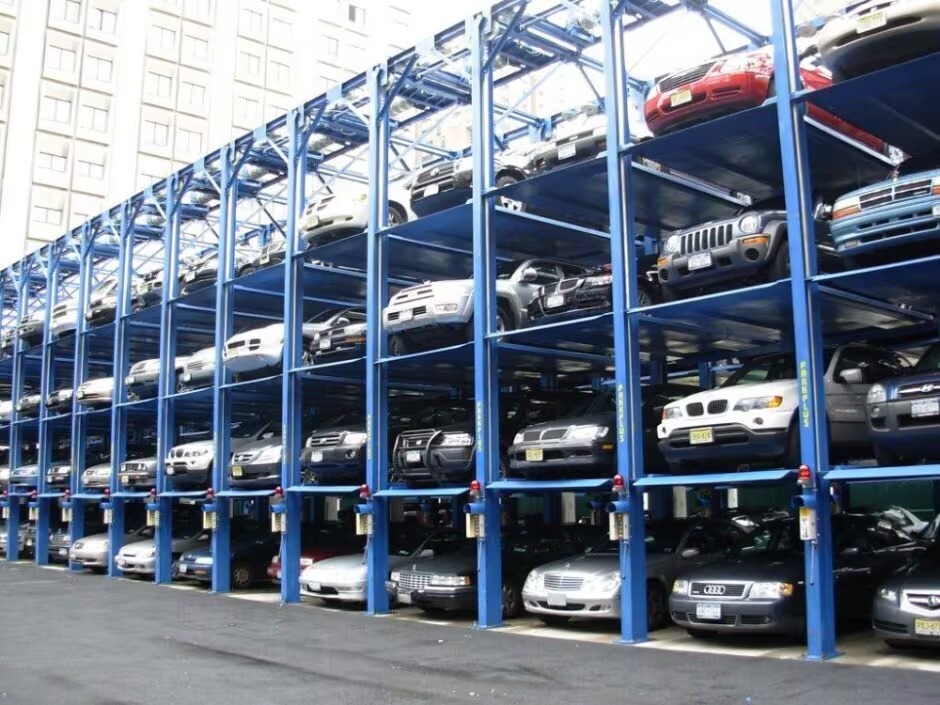
The future of puzzle parking systems is closely tied to advancing technology and changing urban mobility patterns. Integration with smart city infrastructure enables real-time parking availability updates and dynamic pricing based on demand. Artificial intelligence and machine learning algorithms continue to improve operational efficiency and user experience. Development of autonomous vehicle compatibility allows for seamless integration with self-parking cars. Advanced materials and manufacturing techniques promise more durable and efficient system components. Internet of Things (IoT) integration enables better system monitoring and predictive maintenance capabilities. Mobile technology advancements improve user interface and remote system access. Virtual and augmented reality applications assist in maintenance training and system diagnostics. Blockchain technology may be implemented for secure payment processing and access control. The continued evolution of electric vehicles drives the integration of charging capabilities within puzzle parking systems. These technological advances contribute to making puzzle parking systems an increasingly attractive solution for urban parking challenges.
Puzzle parking systems represent a significant advancement in addressing urban parking challenges through innovative technology and efficient design. As cities continue to grow and evolve, these systems will play an increasingly important role in managing vehicle storage while optimizing space utilization. The combination of space efficiency, environmental benefits, and technological integration makes puzzle parking systems a compelling solution for modern urban development. Property developers, urban planners, and city administrators should carefully consider implementing these systems as part of their long-term development strategies, recognizing both the immediate benefits and future potential of these innovative parking solutions. The continued advancement of technology and increasing emphasis on sustainable urban development will likely drive further improvements and wider adoption of puzzle parking systems in the coming years.
